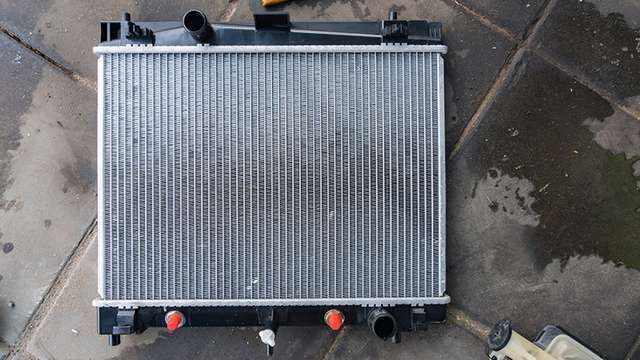- cooling
What does a radiator do?

Updated 4 Mar 2020
Joel Ilton

We all know that an overheating engine is bad, but most of us don’t give much thought to how the engine is cooled in the first place until an issue arises. It is a misconception that the cooling system is there to keep everything as cool as possible - it’s actually designed to keep the engine and associated components at the correct operating temperature to allow the most efficient operation.
The main component of the cooling system is the radiator, which is usually located at the very front of the vehicle, just behind the front bumper. It is joined to the engine by radiator hoses, and the water pump provides the drive that moves the coolant through the system.
The radiator is a large heat exchanger, and most modern radiators are comprised of an alloy core with plastic end tanks attached. The alloy core is filled with narrow passageways, also known as tubes, and the coolant is pumped through these tubes after entering through one of the end tanks.
As the coolant passes through these tubes, the incoming airflow from the vehicle movement draws the heat out of the coolant before it makes its way back into the engine.
Coolant
This process happens hundreds of times a minute when the engine is at operating temperature, but what about when the engine is cold first thing in the morning? That’s where the engine thermostat comes into play.
This thermostat closes off the engine and radiator to prevent coolant flowing through the radiator when the engine is cold, so the coolant passes through the engine only. This allows the engine to ‘warm-up’ and reach operating temperature quickly, reducing harmful exhaust emissions. Once a certain temperature is reached, the thermostat opens and allows coolant to flow into the radiator.
“What about when the vehicle is stopped?” I hear you ask. Manufacturers have thought of this too, and it’s the job of the cooling fan to pull airflow through the radiator when the vehicle isn’t moving. The coolant temperature sensor tells the engine control computer when the coolant isn’t keeping the temperature in check, and will switch the cooling fans on to draw cool, fresh air through the radiator in an effort to bring the temperature back down.
Cooling
- Do you know the difference between air-cooled and water-cooled engine?
The radiator is an amazing piece of automotive technology, working hard in all temperatures to keep your vehicle running as smoothly as possible. If you notice your vehicle overheating or coolant leaking under your vehicle, you may have a problem with your radiator or another part of your cooling system. Not to worry, as a qualified technician from AutoGuru will be able to inspect your vehicle’s cooling system and provide a quote for any repairs needed to get you back on the road in no time!

Written By
Joel Ilton
Finding a passion for cars from a young age, Joel carried out work experience as a mechanic whilst at school before starting an apprenticeship after finishing year 12.
Joel is now the Workshop Manager at Robina Volkswagen.